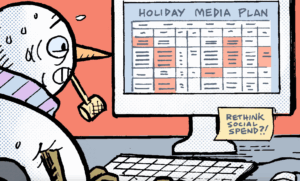 “Data-Driven Thinking” is written by members of the media community and contains fresh ideas on the digital revolution in media.
“Data-Driven Thinking” is written by members of the media community and contains fresh ideas on the digital revolution in media.
Today’s column is written by Jay Stevens, general manager for international at Rubicon Project.
It’s fair to say that native advertising may have generated more column inches in the industry press than most any other topic last year.
Alongside the growth of automated advertising – set to power 50% of ads within three years, according to Magna Global – as well as increasing smartphone adoption and mobile media consumption, the level of coverage would have many believe that native advertising is effectively a third major trend shaping the market.
But native advertising is nothing new, and rather than being an either/or option for publishers, it offers a great counterpart to automated advertising. Here’s why.
We Need To Talk About Native
Obsessed as we always are in this industry by the next big thing, it’s worth taking a step back to understand what we actually mean when we talk about native.
In 2013, arguably out of nowhere some heard of publishers making up to 50% of their revenues from this supposedly “new” form of advertising. How could this stratospheric level of growth be possible over such a short space of time? Automated advertising, of which real-time bidding is a part, may have grown quickly – but nothing like this.
The truth, of course, is that publishers’ native ad efforts didn’t begin in earnest last year at all. The fact is that in many cases, “native” is simply a new catch-all term for creative partnerships.
Native advertising, at least when applied to publishers, means the type of high-value, high-impact, creative commercial partnerships, often involving content integrating the advertisers’ brand, that publishers have been producing successfully for years, and which result in some of their highest-revenue deals.
So there you have it: Native advertising, just like advertorials in print, is nothing new. Rather, it is an area in which premium publishers have – and always had – expertise, and are in prime position to offer advertisers.
What’s more, the whole thinking behind automated advertising is that it frees sales executives and ad solutions teams to focus more time and attention on higher-value tasks. And native advertising is a perfect example of just this sort of high-value, creative and customized work.
In other words, native and automated advertising are not an either/or for publishers, as they have been painted in certain quarters, but rather complement each other perfectly.
What’s more, forward-thinking publishers like the Guardian, which have already split their sales teams to focus either on multichannel, high-impact, creative solutions, or standard IAB banners to be executed through automated trading, are in prime position to take advantage of both.
The Gartner Hype Cycle For Native
The bottom line is that native advertising may not be anything new for publishers after all. But, on the other hand, if the emergence of this term signals a renewed prominence, interest and confidence in the commercial partnership, this can only be a good thing.
The only caveat to this revolves around the traditional “church and state” divisions between editorial and commercial, including sponsored content. There is also the question of scalability.
Publications such as The New York Times have answered the former by explaining that writers of native advertising are not in-house editorial staff. It will be interesting to see how others approach this issue.
As for scalability, tech players in this space respond by saying they are now apparently building “ad networks for sponsored content.” The irony is certainly not lost on those of us who work in display.
All in all, we must remember we are still in the upper reaches of the Gartner Hype Cycle for native, and as it pans out, it will be interesting to see whether publishers scale their native efforts alone, or indeed go down a content network route.
Regardless, the stage is already set for native and automated advertising to perform in perfect harmony. It will be intriguing to see the potential effect on advertisers.
Follow Rubicon Project (@RubiconProject) and AdExchanger (@adexchanger) on Twitter.











